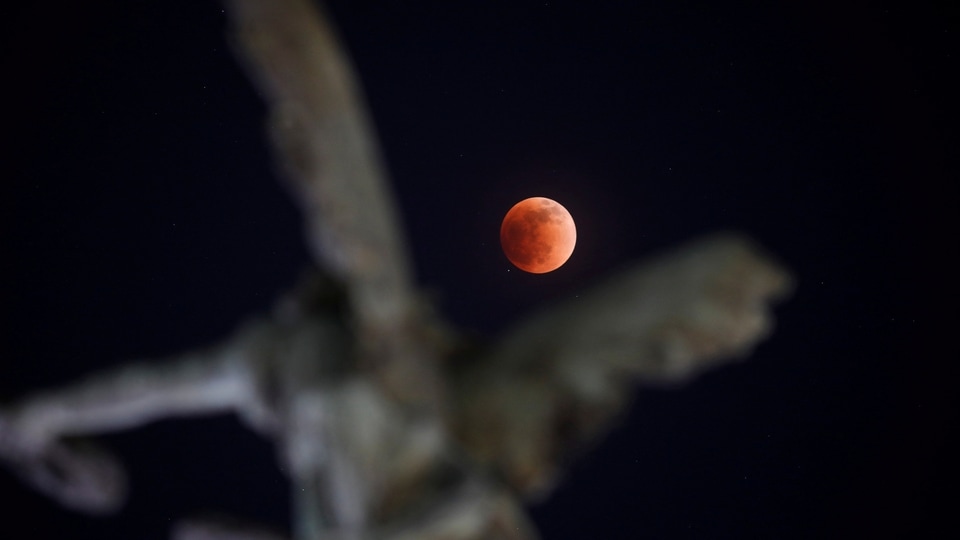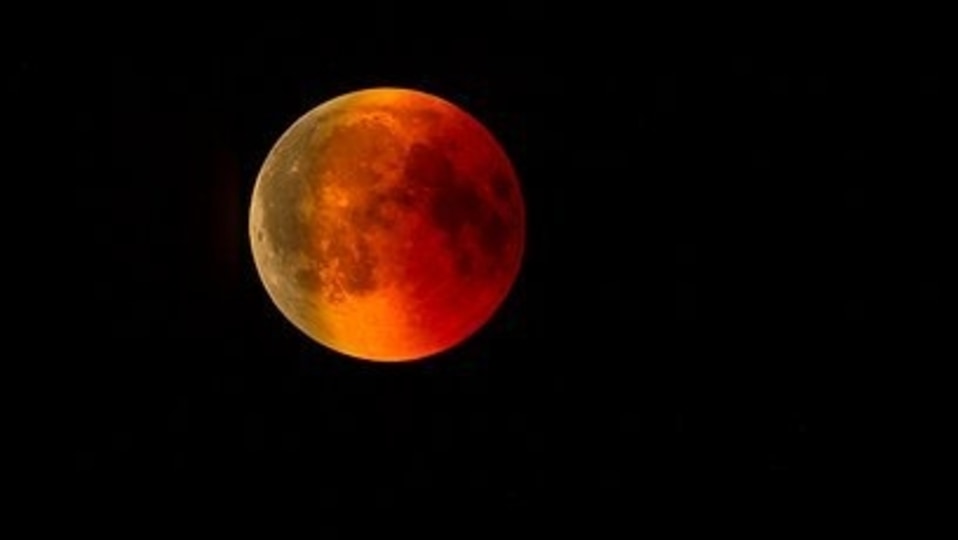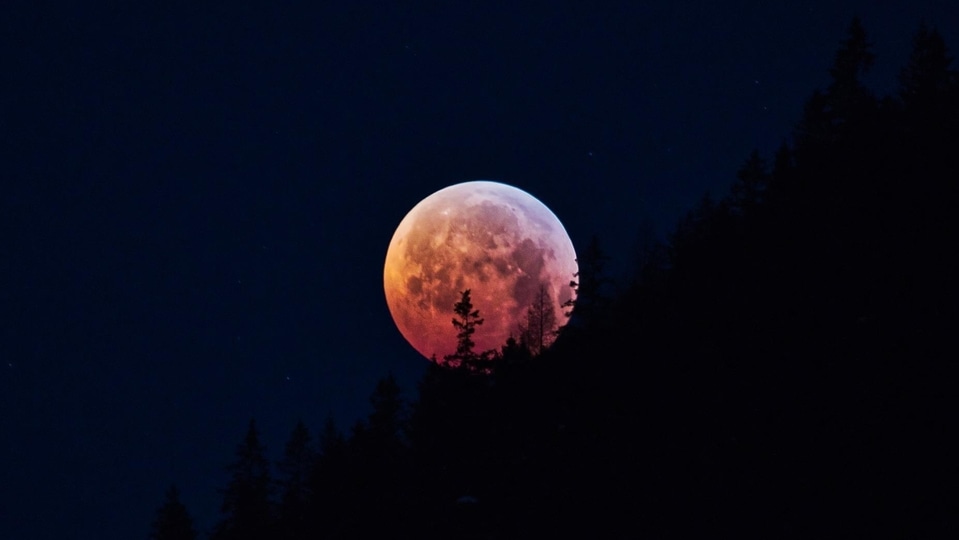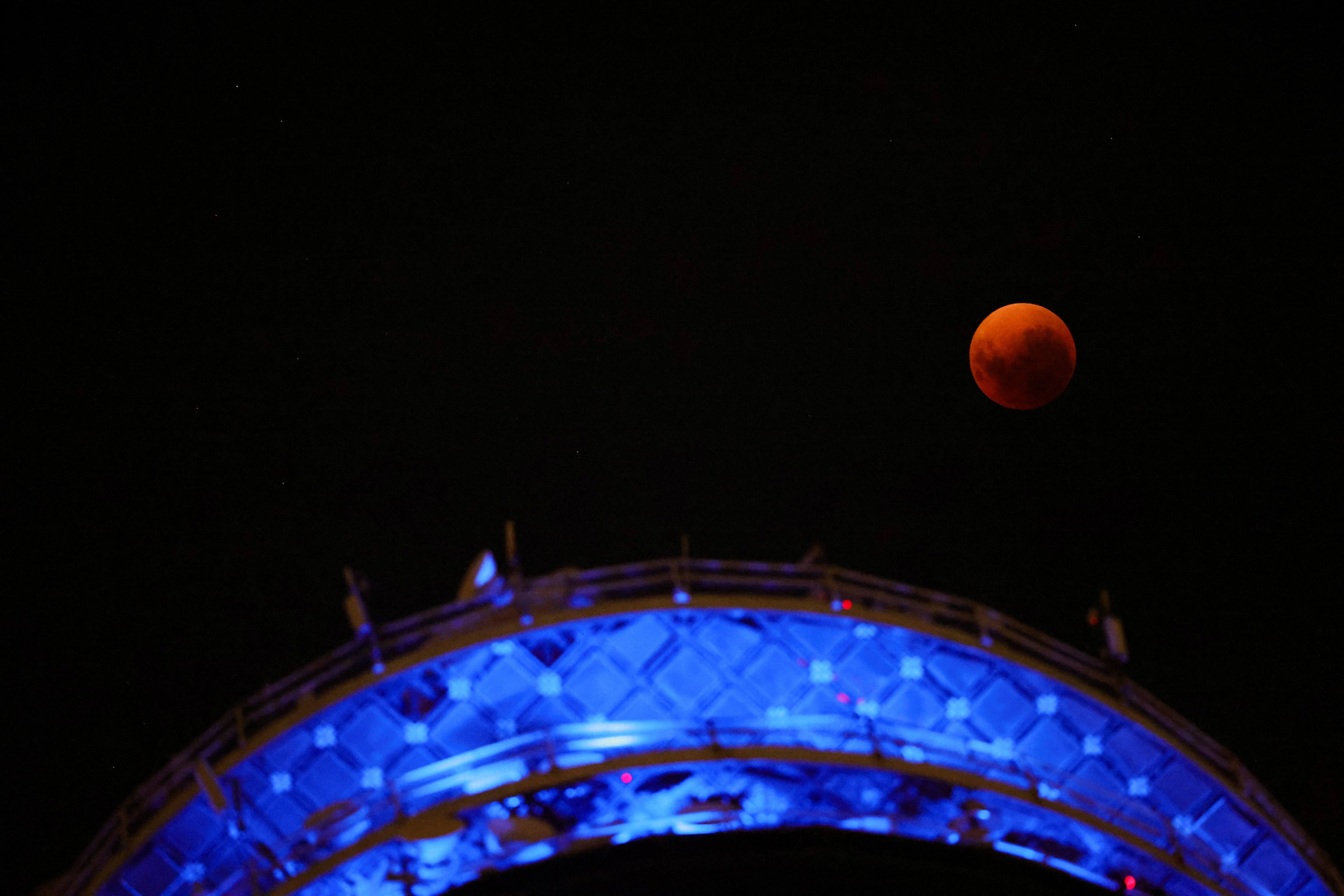Awesome moon in offing! A lunar eclipse is set to dazzle today
Today evening people across Australia and New Zealand will be treated to an awesome sight- total lunar eclipse.



_1651891018983_1651891041408.jpg)


 View all Images
View all ImagesToday evening people across Australia and New Zealand will be treated to a total lunar eclipse, weather permitting.
It's an opportunity to not be missed, as the next one won't be visible from our region until 2025.
A lunar eclipse happens when the Moon travels through Earth's shadow.
If the Moon only partly makes it into the shadow, that's a partial eclipse.
In a total eclipse, the Moon becomes fully immersed and takes on a reddish/orange glow.
In today's eclipse the period of totality – when the Moon is fully immersed in shadow – will last a leisurely 85 minutes.
The only light reaching the Moon's surface will first pass through Earth's atmosphere, which is why the Moon will take on a red hue.
Just how red it appears will depend on how dusty Earth's atmosphere is at the time.
It will be a wonderful experience to share with family and friends, especially as you won't need any equipment to see it.
It's also safe to look at – unlike solar eclipses, where special care must be taken when viewing the Sun.
A twilight moon or a midnight moon?
Everyone on the night side of the Earth will experience the lunar eclipse simultaneously.
But what time that is for you will depend on your timezone.
In New Zealand the eclipse will happen late in the evening, and the eclipse maximum will be just before midnight.
The Moon will be high in the northern sky.
Across Australia, the eclipse will happen around moonrise.
So the Moon will be much lower in the sky and battling against the twilight glow during the eclipse's early stages.
Eastern Australia will see the eclipse shortly after the full Moon rises.
The further north you are, the longer you'll need to wait before the eclipse begins.
For Brisbane it will start more than an hour after moonrise, so the Moon will be higher in the sky.
In Hobart the eclipse begins just 15 minutes after moonrise.
For the rest of Australia, the eclipse will begin before the Moon rises.
Throughout central Australia it will start only a few minutes before moonrise, while in Western Australia it will be well and truly under way by moonrise.
Those up north will see some of the partial eclipse before totality sets in, but Perth can expect to see a fully eclipsed Moon deep in shadow at moonrise.
Big Moon rising
If you see the eclipse soon after Moon rises, expect it to look amazing.
That's because something called the “Moon illusion” will come into play.
This is where your brain is tricked and the Moon looks much bigger when it's low on the horizon, compared to when it's high up in the sky.
The Moon will rise in the east-northeast for all of Australia, so a high location or a clear view of the horizon will help with seeing the early parts of the eclipse.
As the Moon gets higher, and the sky darker, the later part of the eclipse should be easy to see for everyone.
Joined in opposition
But it's not just the Moon you should be looking out for.
On the night of the eclipse, the ice giant Uranus will appear near the Moon as seen from Earth.
So if you have a pair of binoculars, you can try spotting Uranus during totality, when the Moon's light won't interfere.
Uranus will reach opposition the day after the eclipse, on November 9, which means it will be – like the full Moon – in the opposite part of the sky to the Sun. This is when the planet is at its closest and brightest.
However, at a distance of 2.8 billion kilometres, Uranus is so far away that even through binoculars it will appear star-like.
Only a large telescope will reveal it as a small blue-green dot.
One among the planets
But even without binoculars there are some lovely stars and planets to see. Bright Jupiter and Saturn will be easy to spot high overhead, above the eclipsed Moon.
Later in the evening, all viewers will be able to spot the constellation of Taurus rising in the north-east – with the lovely star cluster Pleiades and the red giant star Aldebaran – along with Orion and its red supergiant Betelgeuse.
The red planet Mars will also make an appearance.
People in New Zealand and Queensland will be well-placed to see four red objects in the sky together: the eclipsed Moon, Aldebaran, Betelgeuse and Mars low to the horizon.
Lunar eclipses are reminder that we live on a planet that's moving through space. When I stare up at the Moon in shadow, I like to imagine what it would be like to stand on it, and see the Sun blocked out by the Earth.
Perhaps you'll have your own moment of wonder and awe – of how astronomy can sometimes leave us feeling a little small, yet also connected to something much grander.
Catch all the Latest Tech News, Mobile News, Laptop News, Gaming news, Wearables News , How To News, also keep up with us on Whatsapp channel,Twitter, Facebook, Google News, and Instagram. For our latest videos, subscribe to our YouTube channel.





























